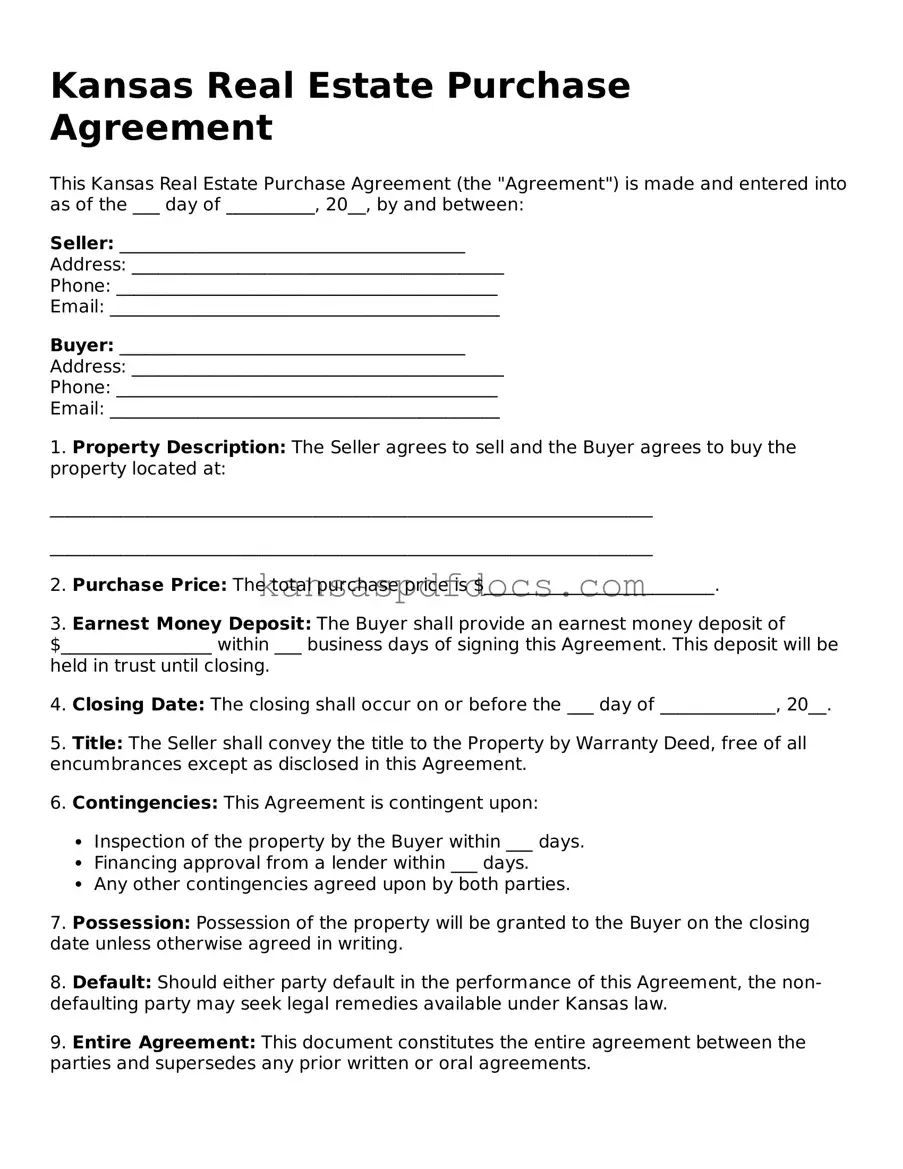Valid Real Estate Purchase Agreement Template for Kansas State
The Kansas Real Estate Purchase Agreement form is a legal document that outlines the terms and conditions under which a buyer agrees to purchase real estate from a seller. This form serves as a crucial tool in the real estate transaction process, ensuring that both parties have a clear understanding of their rights and obligations. By using this agreement, buyers and sellers can work toward a successful transfer of property ownership.
Access This Form Now
